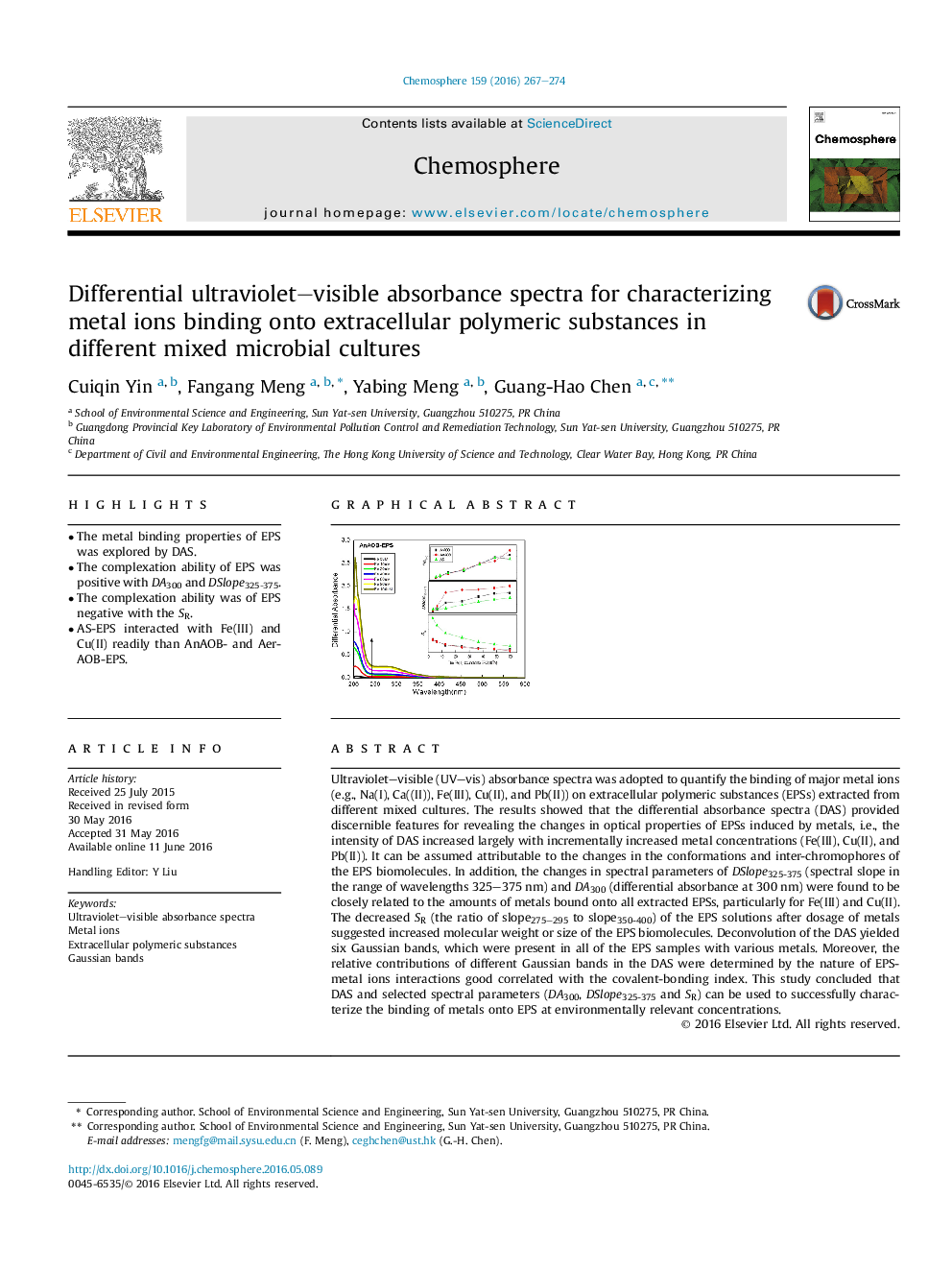| کد مقاله | کد نشریه | سال انتشار | مقاله انگلیسی | نسخه تمام متن |
|---|---|---|---|---|
| 4407465 | 1618812 | 2016 | 8 صفحه PDF | دانلود رایگان |
• The metal binding properties of EPS was explored by DAS.
• The complexation ability of EPS was positive with DA300 and DSlope325-375.
• The complexation ability was of EPS negative with the SR.
• AS-EPS interacted with Fe(III) and Cu(II) readily than AnAOB- and AerAOB-EPS.
Ultraviolet–visible (UV–vis) absorbance spectra was adopted to quantify the binding of major metal ions (e.g., Na(I), Ca((II)), Fe(III), Cu(II), and Pb(II)) on extracellular polymeric substances (EPSs) extracted from different mixed cultures. The results showed that the differential absorbance spectra (DAS) provided discernible features for revealing the changes in optical properties of EPSs induced by metals, i.e., the intensity of DAS increased largely with incrementally increased metal concentrations (Fe(III), Cu(II), and Pb(II)). It can be assumed attributable to the changes in the conformations and inter-chromophores of the EPS biomolecules. In addition, the changes in spectral parameters of DSlope325-375 (spectral slope in the range of wavelengths 325–375 nm) and DA300 (differential absorbance at 300 nm) were found to be closely related to the amounts of metals bound onto all extracted EPSs, particularly for Fe(III) and Cu(II). The decreased SR (the ratio of slope275–295 to slope350-400) of the EPS solutions after dosage of metals suggested increased molecular weight or size of the EPS biomolecules. Deconvolution of the DAS yielded six Gaussian bands, which were present in all of the EPS samples with various metals. Moreover, the relative contributions of different Gaussian bands in the DAS were determined by the nature of EPS-metal ions interactions good correlated with the covalent-bonding index. This study concluded that DAS and selected spectral parameters (DA300, DSlope325-375 and SR) can be used to successfully characterize the binding of metals onto EPS at environmentally relevant concentrations.
Figure optionsDownload as PowerPoint slide
Journal: Chemosphere - Volume 159, September 2016, Pages 267–274
